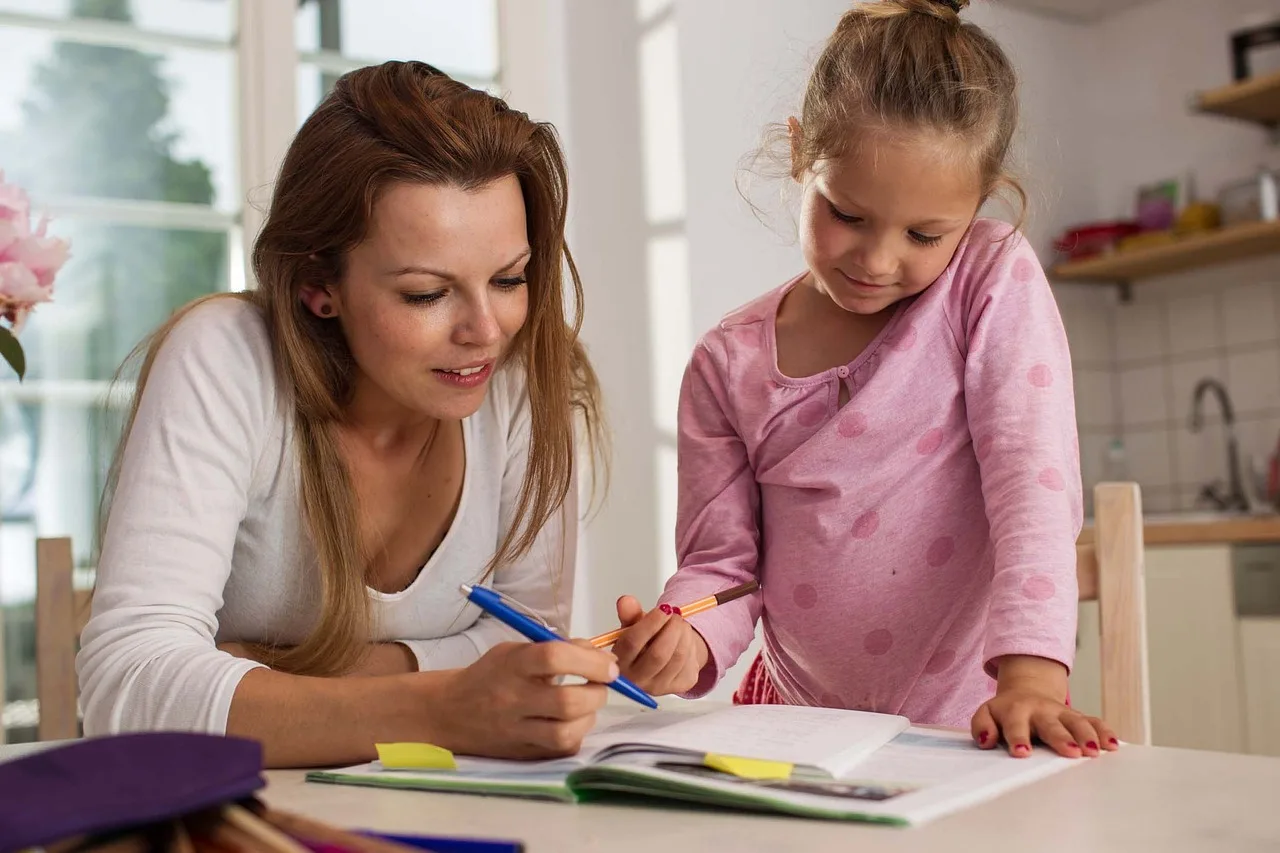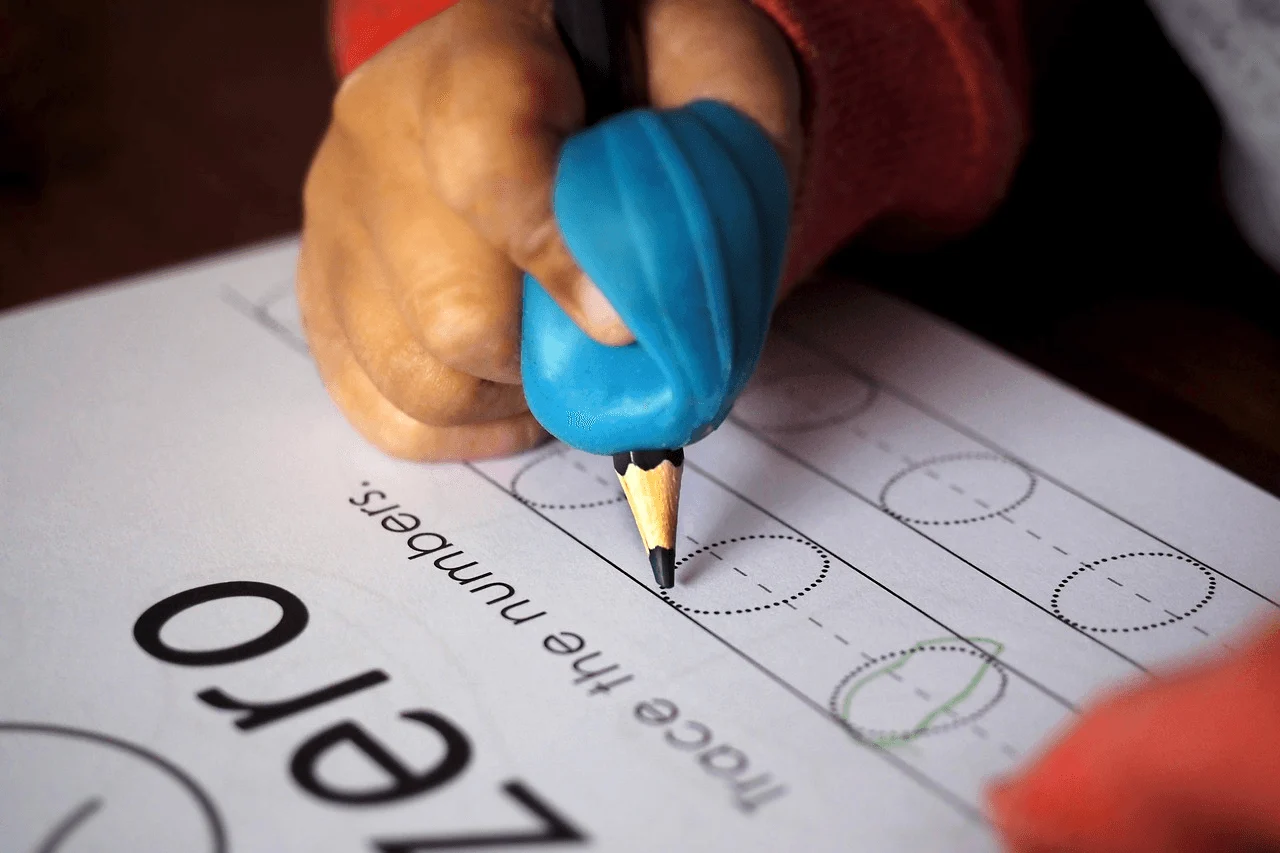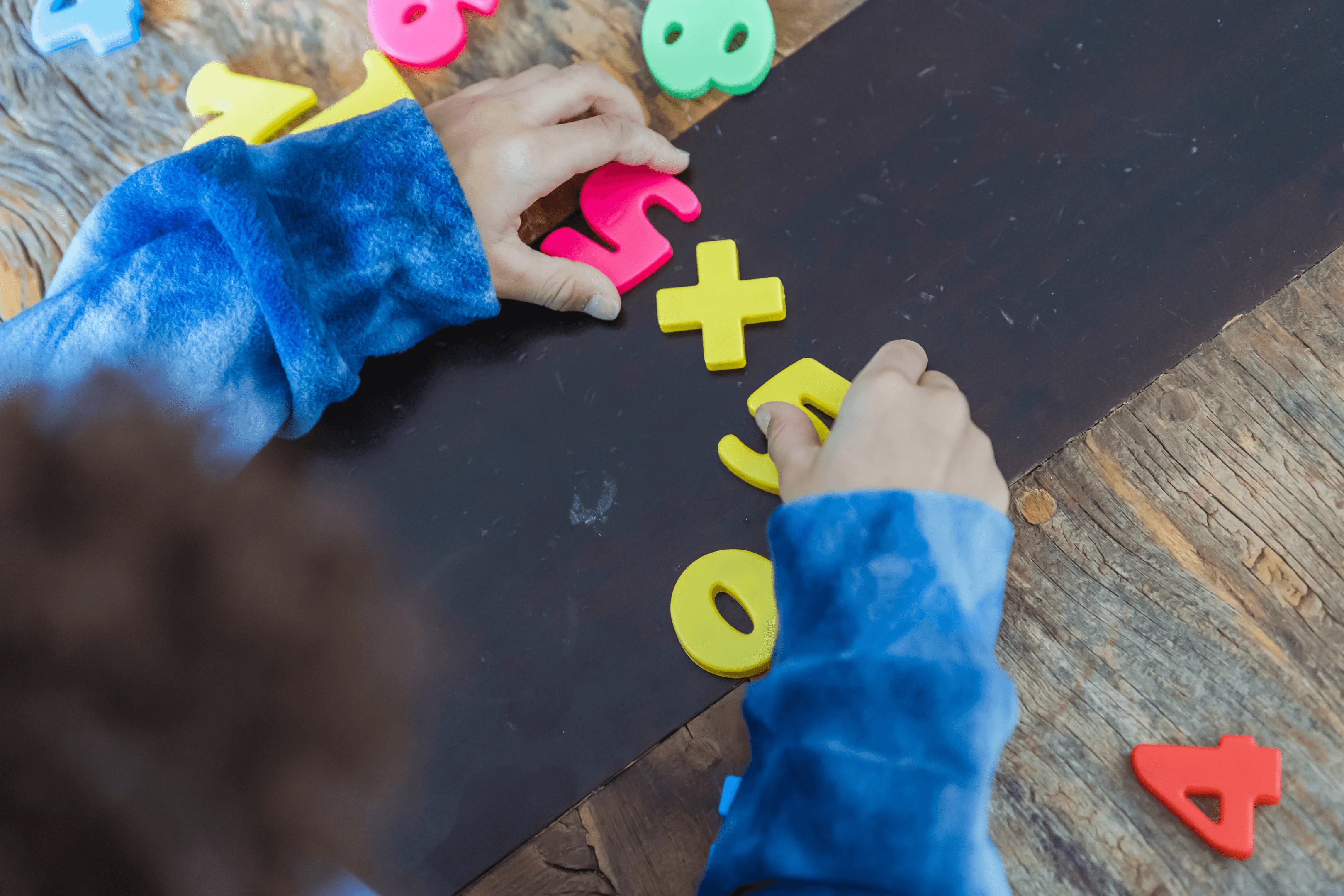Is your child writing numbers backwards?
Every child will reverse at least a few numbers when they are going through the process of learning to write. It’s a natural part of the learning process and is usually nothing to worry about.
Typically, children who are at the early stage of learning to form their numbers will make some mistakes. Stop and think about it for a moment – there is a huge amount of information to remember.
Your child will be trying to remember what the number symbol looks like, the name of the number, what the number symbol represents, as well as the direction to write it in. There is so much going on that it’s a wonder that any of us learn to write our numerals at all!
As your child learns to enjoy marking, number symbols usually start to emerge through a series of scribbles and random marks that slowly start to merge into more definite lines, dots, dashes and shapes. Basic number shapes then begin to appear.
If your child is at this stage, make sure that you give them plenty of encouragement to make marks with a wide variety of resources, and remember to try not to put any pressure on them.
How to encourage your child to write numbers?

If your child is writing numbers backward, firstly, give him or her lots of opportunities to make scribbles and random marks so that they are comfortable with and enjoy the writing process.
Praise all their attempts, as this will encourage them to keep going and will increase their confidence.
This could include:
Making marks with your finger or with a stick in the sand.
Making marks in condensation on a window.
Making marks with food on their high chair tray.
Using chalks to make marks outside.
Painting marks on an easel.
Using crayons or pencils to make marks on paper.
Making marks with sticks in the mud.
It’s a good idea to display some of your child’s early attempts at writing, as this will give them pride and motivation to keep writing. Pin their attempts on the wall or the fridge and tell them how proud you are of their drawings–even if the numbers are written backwards.
When numbers do start to emerge, giving your child a real purpose to write is always a good idea. For example:
• Write a numbered shopping list together before you go to the shops.
• Write down grandma’s phone number and ring her up.
• Write numbers on post-it notes to label items as you build them with logo or Duplo.
• Write a numbered list to Santa.
Try to encourage your child to write with real purpose, as this will undoubtedly help to motivate them. Don’t focus too much on the correct formation of the number symbols at this stage.
Simply let your child enjoy the feeling of being a “real” writer. Let them believe that they are writing numbers for an important job.
Why do number reversals happen?

Number reversals (and letter reversals) sometimes happen because your child is trying to remember a lot of information when they begin to write. It’s really not surprising if they mix a few numbers up or write them the wrong way, or confuse letters and numbers. It’s all a part of the learning process.
Typically, the numbers 2 and 5 will be reversed at some stage, and the numbers 6 and 9 are also common to be written backwards, but these are not exclusive and some children will write other backward numbers, too. This is very common and most children will grow out of it as they become more experienced and confident.
Seeing lots of numbers displayed in the environment can also help. Often we hear about the importance of providing a language-rich environment, but it’s equally as important to display numbers to create a numerate-rich environment so that young children can see them regularly.
This will help your child improve their memory and learning process. Pin up posters of numbers or cut out large number templates so that they are always visible. If you can, provide access to plenty of lovely number resources such as:
• Magnetic numbers on the fridge
• Foam numbers for the bath
• Plastic numbers to play with in play dough
• Squidgy or tactile numbers to feel the shape of the number.
• Wooden numbers to trace over.

But it’s not always numbers that are reversed. Writing letters backwards is also common in children. Many children will reverse letters as they begin the process of learning to write. Again, writing letters backwards is entirely natural and nothing to worry about, especially if it is early on in your child’s letter formation and writing journey.
The writing process is brand new for young children and we need to give them plenty of time and space to practice writing letters and numbers. Be patient and try not to pass on your worries whenever your child writes in reverse or mirror writing. If a child senses anxiety around the process of writing, they are much more likely to grow into a reluctant writer so always try to keep it fun and interesting.
How can I help my child?

As your child forms each individual number, a lot is happening in their young brain that we as adults can take for granted because we have been reading and writing numbers automatically for so long.
But children are having to visually discriminate between lots of new number shapes – it can be understandably confusing. There are lots of activities that you can do prior to starting to write to help develop your child’s visual discrimination skills.
The simplest way to explain this skill is that your child needs to develop their ability to be able to spot the difference. The more practice your child has at spotting the difference between print, the better your child will become at recognizing the differences between numbers as their visual discrimination skills start to improve.
Here are some practical ways and great tips to develop this:
Wooden board jigsaws are a good starting point for matching the same pictures together.
Matching picture cards – Can they find two cards with the same picture on them?
Lotto games or picture bingo.
Can they pick out the odd one from a series of simple pictures?
Can they find all the differences between two similar pictures? (Spot the difference).
When they are playing with blocks or construction toys, can they find and order blocks that look the same?
Can they find all the teaspoons in the home corner?
Using spot-the-difference picture books is another good way of getting your child to look at print really closely.
Go for a nature walk and see if they can find similar groups of leaves, flowers, or patterns in buildings or architecture.
A little bit of daily practice in visual discrimination is great as long as your child is having fun and enjoying the process. If not, stop, wait awhile, and return to it later.
All of these activities will help your child to start to be more visually discriminating to, later on, improve number formation (and letter formation). But they are not a magic wand and as all kids are individuals, they will need different amounts of time to learn to write numbers. Don’t be tempted to compare how your child writes with another child who may be further on in the number writing process.
When should I ask for help?

It is very common for children to reverse numbers and write letters backwards up to the age of seven. Even if your child appears to be confidently forming their numbers, don’t be surprised if they have lapses from time to time. There is such a lot to remember so don’t be surprised if you notice some mirror writing or some reversals during this early learning process.
However, if your child is older than seven and they have had plenty of opportunities to practice writing numbers, you might start to notice that problems with reversals persist. You may also notice mirror image writing, where numbers appear as though they have been written in a mirror.
Every child is different and age seven is only a guide. If your child has reached the age of seven but has missed a lot of school for some reason, they may just be experiencing a delay in the number writing process and will need more time to catch up.
However, some children may continue to experience visual discrimination problems. This might be because they have a poor memory for remembering and forming their numbers. They may find the skill of discriminating between two numbers more difficult than other children or they may have difficulties in processing visual information.
If you feel this may be the case with your child, first speak to your child’s teacher and seek help. There are lots of ways to support this and the earlier it is picked up the better the chances of mitigating the delay.
The earlier we can identify a delay in memory processing or a delay in visual discrimination skills, the earlier we can start to support children with specialist teaching.
Remember to keep it fun. Happy number writing!

AYOADE
Sunday 15th of October 2023
So helpful thank you.